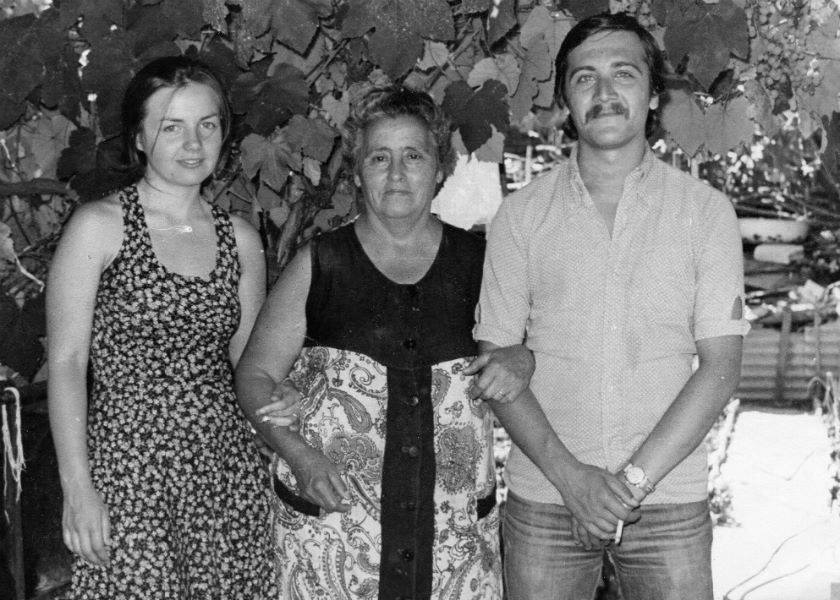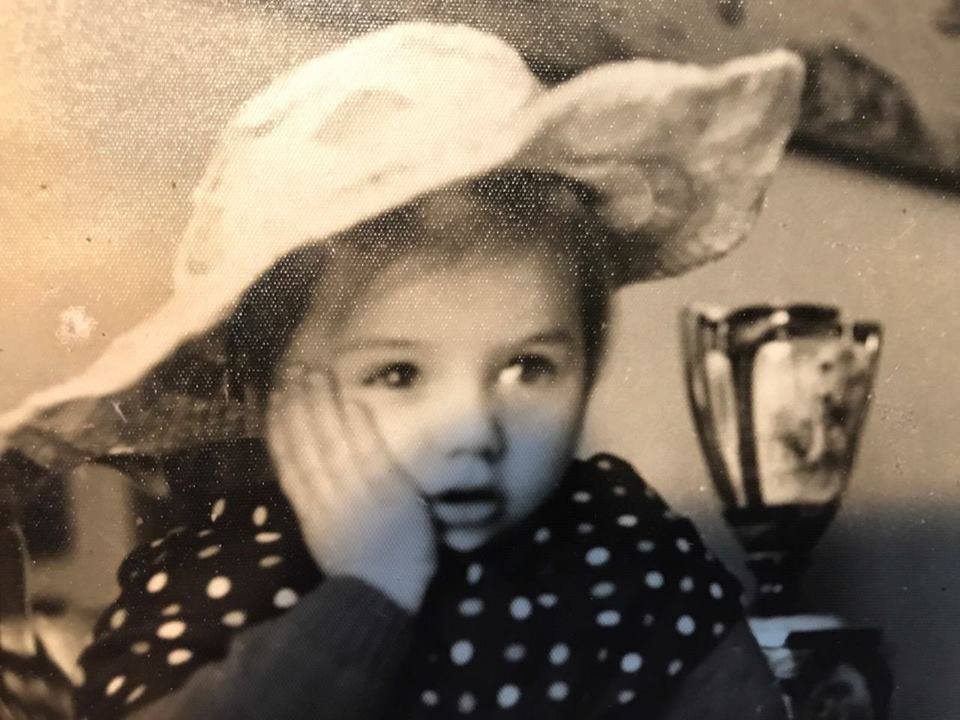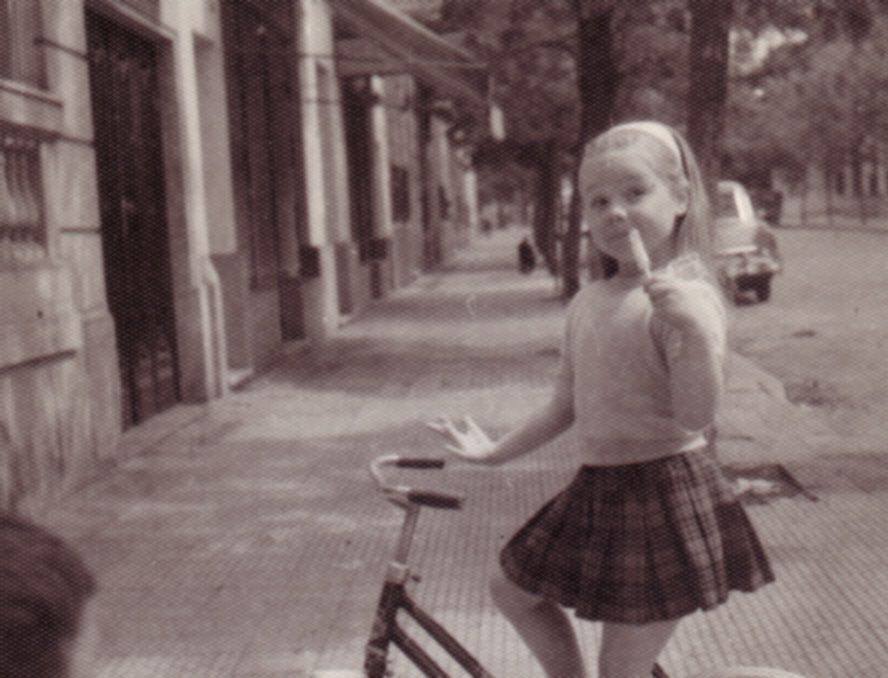Latin America
Related: About this forumMy Sister Was Disappeared 43 Years Ago
A casualty of Argentina’s so-called Dirty War, Isabel haunted my childhood like a ghost. Then I started searching for her.
Story by Daniel Loedel
8:00 AM ET
The report from the Argentine Forensic Anthropology Team included 20 photos of my half sister’s bones—nearly as many photos as I had ever seen of Isabel herself.
The ones of the bones punctured by bullets—her rib, her pelvis, her humerus—did not move me as much as those of her skull. It was so old-looking, like one of those prehistoric craniums of Homo sapiens, the nose bashed in, some of the teeth missing, that earthen coloring. The skull had lain in a common grave, untouched for more than 30 years, before being taken to a lab, where it remained officially unidentified for about another 10. The sight of it destroyed me. In all the photos I had seen, Isabel looked incredibly young, with a cherubic beauty—round cheeks, light hair, searching blue eyes. She had been murdered and disappeared by the military dictatorship in Argentina in January 1978, when she was just 22. Staring at those photos of her skeleton in March 2018, I was eight years older than she ever had been. Never before had I quite grasped how much time she hadn’t gotten to live, to age and grow old, until I saw her bones, and realized they had been aging without the rest of her.
One photo showed a bullet that had remained lodged in her skeleton the whole while. The sight would have been a comfort to many because, along with the bullet holes in her bones, it suggested that Isabel had been killed in a gunfight, not imprisoned and tortured, as most of the regime’s victims were.
I was the recipient of the report because, despite being born in New York 10 years after Isabel was killed, I was the legally designated recipient of her remains. The anthropology team had tried to reach my father and my half-brother, Enrique, around 2012, as part of its project of identifying the disappeared victims of Argentina’s so-called Dirty War—the period from 1976 to 1983 in which the U.S.-backed military dictatorship kidnapped and killed tens of thousands of supposed dissidents in the name of fighting off communism. But the team’s letters to my family went unanswered. There were valid explanations, including the vagaries of international mail, address changes, and so on. I had little doubt, though, about the main reason there was no response. My father, in particular, had long ago chosen to leave this part of the past buried.
Growing up, I almost never heard mention of Isabel. At most, she was a kind of ghost hovering in the background. A single black-and-white photo of her hung over my father’s bed, highly pixelated because it was a blowup of the yearbook photo he kept in his wallet after he moved to the U.S. For a long time I didn’t know who it was, but even as a child, I was aware that I shouldn’t ask.
More:
https://www.theatlantic.com/culture/archive/2021/01/daniel-loedel-finding-my-sisters-remains/617701/
- Click for image. -
https://ca-times.brightspotcdn.com/dims4/default/7292bd2/2147483647/strip/true/crop/1024x1024+0+0/resize/1024x1024!/quality/90/?url=https%3A%2F%2Fcalifornia-times-brightspot.s3.amazonaws.com%2F7e%2Ffd%2Fd6e30ce0447eaadf1c57c1a5a35a%2Fla-ca-hades-argentina-book-034.JPG
Author's book
~ ~ ~
Google translation:
La Plata: Burial of the recovered remains of Isabel Loedel Maiztegui
admin / March 21, 2019

We share with emotion an invitation from the brothers of Isabel Loedel Maiztegui (my sister-in-law fell in combat along with my brother Julio):
Dear all,
As many of you already know, last year, with the help of the Argentine Forensic Anthropology Team (EAAF), the remains of Isabel Loedel Maiztegui were identified. More than forty years after her murder, on March 26 of this year, we are going to bury the remains of our beloved sister in the Pantheon of Memory, Justice and Truth, in the La Plata cemetery, along with the remains of other victims of the dictatorship and her husband and companion in struggle, Julio de Giacinti, who died along with her. They are all invited to the ceremony of tribute to the life of Isabel.
Details follow:
Date: Tuesday, March 26
Time: 11:00
Address: Panteón de la Memoria, La Plata Cemetery
Hopefully you will be able to come and please invite anyone you think might want to attend the ceremony. If you want to say a few words at the ceremony, we would love to hear you, and if you have any small memory of Isabel that you want to inhume with her remains, please bring them as well.
Very grateful to all, and big hug,
Danny and Bonnie

![]()

https://cdn.theatlantic.com/thumbor/Zt5Lm34te9vLJUwsufbOe3KR5jY=/0x185:2048x1213/1920x964/media/img/2021/01/15/Opener_edit/original.jpg
Rest in Peace
Isabel Loedel ![]()
nocoincidences
(2,220 posts)of Chile and other South American countries during the juntas.
It is haunting.
Judi Lynn
(160,545 posts)Different voices, unbearably moving. They were on the same wave-length.
So glad I finally got the chance to hear it. Thank you, so much, nocoincidences. ❤️️
sandensea
(21,639 posts)Then-President Néstor Kirchner in 2006 first gave the Argentine Forensic Anthropology Team permission to search the Campo de Mayo Army training base for long-rumored mass graves.
Now, they'll be using aerial laser scanning technology to see below the (vast) surface - in hopes of finding more burial sites.
https://translate.google.com/translate?sl=auto&tl=en&u=https://www.telam.com.ar/notas/202101/541893-el-eaaf-inicio-una-busqueda-aerea-en-campo-de-mayo-para-encontrar-tumbas-con-desaparecidos.html
The base - located about 10 mi NW of Buenos Aires, and at 20 mi² the largest in the country - became the second most-important detention center during the Dirty War: of the 4,000 prisoners detained at the facility in 1976–78, 50 survived.
Judi Lynn
(160,545 posts)of the military dictatorship against all visible forms of dissent in Argentina.
Reading the article created a feeling we're approaching a dawn of consciousness concerning these assassinated people of conscience in Argentina. Leads a person to imagine they think goodness overcoming evil just might be within reach.
After thinking about the detention centers, I suddenly needed to find out how close Campo de Mayo was to the Atlantic, thinking if it was close, some of the murdered people would have gone into the ocean in the "death flights."


What a shame.

Found a useful article in Spanish.
Google translation:
Campo de Mayo in the dictatorship: how did the repressive circuit work?
It is an irrefutable trace of the genocidal plan of the dictatorship. In this first installment, a journey through the dense repressive fabric of the largest detention center in the country.
Campo de Mayo in the dictatorship: how did the repressive circuit work?
Claudia ferri
@ clau.ferriok
Friday, March 23, 2018 | 11:03
At 6:30 am on March 24, 1976, the "Pilot Operation" was already underway. The surroundings of the Pan-American route woke up completely militarized. Assault cars, war tanks with hundreds of soldiers armed to the teeth stationed on the industrial estates of the area while helicopters flew over the area. With lists in hand, prepared incidentally by union managers and mailboxes, the olive green men threatened, beat and requisitioned the workers who arrived to start the workday, accusing them of "left-handedness" and "subversives." The scene was repeated in Ford, Terrabusi, Astarsa, Mestrina, Forte and Dalmine of the Techint group, among others. Those who were part of the “black lists” were detained in the police stations in the area. Some were released After long sessions of torture and interrogation, others were transferred to Campo de Mayo where they finally disappeared. Thus began the coup d'etat orchestrated by the Armed Forces and promoted by the businessmen. Ironically, the next day Clarín titled "Total normality."
The dense repressive plot
Campo de Mayo has been in the hands of the Argentine Army for 117 years. Located 30 km from the federal capital, it was ceded in 1901 by the State as part of a project that sought to professionalize the armed forces. Over the years it has expanded its extension until today it reaches 8,000 hectares, comparable to almost half of the territory of the city of Rosario.
With the growth of the parties in the surroundings, the routes and annexes that connected it with the north and west of Greater Buenos Aires were developed. During the last military dictatorship, this privileged strategic location made the Campo de Mayo garrison the main organizing and operational center of the state repression of the famous Zone IV, which included both the country's most important industrial center and the neighborhoods that had become working bedrooms. We are talking about the municipalities of the North Zone of Greater Buenos Aires, Tres de Febrero and Campana-Zárate. This entire system was under the direction of the Military Institutes Command in charge of the multiple times convicted of crimes against humanity Santiago Omar Riveros, who today at 94 years of age continues to vindicate the role of the forces in the process.
It was made up of 9 local police stations, the zones liberated by the police from all the municipalities and the four clandestine centers that operated within Campo de Mayo: the military prison, the “Casitas”, the “Campito” -all hidden between trees and grasslands. , away from the hustle and bustle of the routes that border the garrison- and the Military Hospital where a clandestine maternity hospital operated, which we will refer to in a future installment.
The military prison of the Defendants was active from 1976 to 1980 and there the prisoners who were considered spoils of war went to stop. Incredibly, today a significant number of genocide victims are housed in that same place in VIP cells in minimal security conditions with a soccer field, volleyball, and a barbecue area.
Las Casitas, meanwhile, was a temporary detention center used by Intelligence for interrogations. Account Mario Luis Perreti “I was arrested on June 7, 1977 half a block from my home, in the town of San Miguel. They take me hooded to a place where when I get down they make me climb a very steep hill, like cement, introducing me to a place they called "La Parrilla" (File No. 3821).
Finally the "Campito", which ran between 1976 and 1983, was the most brutal of all. As stated by a team of researchers from the University of General Sarmiento , there they experimented with new torture techniques such as the automatic prod, systematic sexual abuse took place and dogs were used to intimidate. Access to it was not easy, you had to get to know the area and go down dirt roads. From there, the "transfers" were carried out, as they cynically called the "flights of death", with a final destination in the Atlantic, 1,500 km to the south. Even detainees from other clandestine centers such as El Vesubio arrived in Campo de Mayo to be finally "transferred."
According to the testimony of the repentant repressor, former sergeant Víctor Ibañez, given to the late journalist Fernando Almirón in Campo Santo , “ the 'Campito' was practically attached to the head of the runway of the Campo de Mayo Aviation Battalion, there was no problem to justify the movement of the Twin-otters, Hercules, and helicopters. It was the ideal place to hide the comings and goings of airplanes. Nobody could see anything, the perimeter was guarded by the Gendarmerie. There were no onlookers, no transit of civilians, or any other danger of indiscretion ”.
The Floreal Avellaneda case was one of the first to help unravel this systematic plan. On May 15, 1976, his body and that of seven other people had been found floating off the Uruguayan coast with obvious signs of torture. It had been a month since he had been kidnapped along with his mother from his home when a task force broke into Munro's house looking for his father, a delegate from the Tensa metallurgical company. Floreal was 15 years old and his death is part of the first cause against humanity that has Campo de Mayo as an extermination center .
The task forces that operated in the surrounding neighborhoods would also leave the garrison using the same modus operandi : in civilian clothes or disguises, late at night, a group would arrive to kidnap the victims and loot their homes. The platoons that occupied the manufacturing plants would also leave from there and chase the workers daily. In order to carry out these tasks, the military needed supplies and vehicles that were delivered by companies such as Mercedes Benz and Ford. In the latter case, the marriage between the bourgeoisie and the guardian of its properties and interests, that is, the repressive forces, was so evident that their pulse did not tremble in setting up a clandestine center of torture and detention inside the industrial premises itself.
Traces of the genocide
The Grand Bourg Cemetery . The evidence that accounts for the class genocide remains hidden not only in Campo de Mayo but also in the surrounding area. In May 1976, the Grand Bourg cemetery was created by the municipality's military inspector mayor. There in 1982 the CELS denounced the burial of 300 and 400 NN corpses carried out during the first years of the repression. Interestingly, although the cemetery began to function in 76, when it still had no wiring surrounding the property, records of entry of bodies were only recorded a year later.
"Military area. Forbidden to pass ”. On the other hand, there is the history of the property of the town of Maquinista Sabio (Escobar) known as Campo Pestarino or "The burning" and used as a municipal garbage dump. According to Enrique Vázquez in El osario de la rebeldia (Pág. 3), on the day of the coup the military arrived in the field and “ began to wire it in a V-shape in whose lower vertex a gate was installed like the one in the Pampean ranches, which Wide enough to allow the passage of large vehicles. Trucks or bulldozers, for example”. At 200 meters they put up a sign that said “Military zone. Forbidden to pass ”. In 2005, a former municipal worker declared that he had seen illegal burials carried out by military personnel during the lead years. Seven years later, a judge was present at the place to speak with the neighbors who affirmed "the bones come out five meters away." The investigation helped find at least a hundred NN bodies. Escobar, land where the repressor Luis Patti ruled for many years, was part of the repressive circuit based in Campo de Mayo, from where the military trucks that arrived at the property left.
http://www.laizquierdadiario.com/Campo-de-Mayo-en-la-dictadura-como-funciono-el-circuito-represivo
Thank you, sandensea, for sharing the work being done in Argentina to assist the spirit of the country as it overcomes the darkness that has taken over the planet.
Judi Lynn
(160,545 posts)TODAY 10:36
Investigators from expert forensic team embark on unique aerial survey of military base in bid to uncover burial sites of individuals killed during 1978-1983 military dictatorship.

THE 5,000 HECTARES OF THE CAMPO DE MAYO MILITARY GARRISON ARE BELIEVED TO CONTAIN HIDDEN HUMAN REMAINS. | TELAM
The world-renowned Argentine Forensic Anthropology Team (EAAF) has begun to carry out a unique aerial survey of the Campo de Mayo military garrison to identify the graves of people who went missing during the 1976-1983 dictatorship.
Anthropologists will take to the skies to fly over the more than 5,000 hectares that housed four clandestine detention centres during the dictatorship era, following up a joint investigation by the Human Rights Secretariat, the Grandmothers of Plaza de Mayo and San Martín Federal Judge Alicia Vence.
The team began their “preliminary investigation” as far back as 2006 to probe the functioning of the clandestine detention centres and hence determine possible burial sites.
The Argentine scientists, acclaimed across the globe for the search and identification of the remains of the missing, have carried out this historic investigation in close co-operation with Juan Carlos “Cacho” Scarpati, a survivor who managed to escape from Campo de Mayo and bear witness to the horrors there.
More:
https://www.batimes.com.ar/news/argentina/eaaf-begins-aerial-search-of-campo-de-mayo-military-garrison.phtml